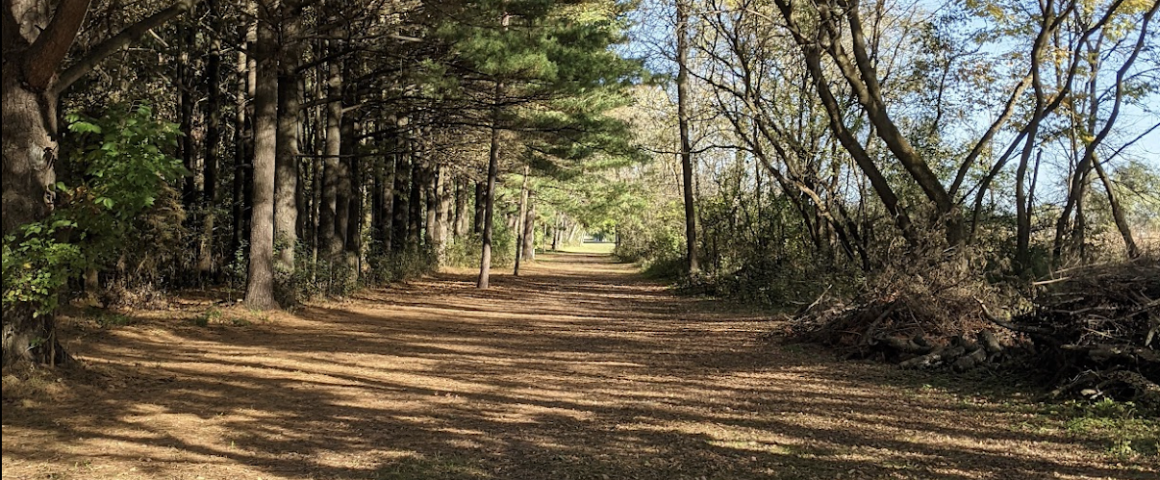“Why is the berry red?” “Why is the bark gone on this side of the tree?” “Where do the squirrels go at night?” “Why is the path all dug up?” “If he could talk, what would the turtle say to me?”
City kids have a lot of questions when they experience a nature preserve for the first time. And these questions are rich in possibilities for writing exercises when children are in the natural world. By using their questions and their five senses, students can generate wonderful, imaginative writing from these outdoor explorations. Many schools are now integrating outdoor education into their curriculums with things like school trips to residential centers, that give them the opportunity to learn all about the great outdoors.
This year I’ve had a unique opportunity to work with students at the Houston Arboretum and Nature Center as they’ve been exposed to nature and the rich abundance of writing ideas the outdoors can bring us.
The Arboretum’s partnership with WITS Houston combines informative outdoor education with powerful creative writing opportunities. The experience has taught me a lot about how children see nature, and about their ability to express their feelings through writing about the world around us. The Arboretum is a rich garden of natural delights hidden in the middle of the maze of highways that is Houston. I’ve watched urban children who have never spent much time in the woods be thrilled by the green, furry moss on a fallen tree. Ten-year-olds revel in their own reflection in the pond. “Cool” twelve-year-old girls on the brink of their teen years laugh out loud at the many holes left behind by the nocturnal armadillos. I’ve seen their mouths gape open at the intricate design in a spider web stretched between two branches in the forest. They actually stop talking every time they hear the frog sounds at the pond. And the turtles… The turtles at the end of our walk are like the elusive pot of gold at the end of a rainbow. They first see one turtle on a log, then another and yet another on that limb coming out from the log. Sometimes the students spot ten turtles placidly sitting in the warm November sun. Their delight is endless. The Arboretum is truly a magical place for these inner-city dwellers.
On each class visit to the Arboretum, we walked through three distinct ecosystems. First, we saw the forest with its tall trees and fallen giants demonstrating the cycle of nature. Then, we walked through the meadow with its open space and grassy treasures. Last, we visited the pond teaming with fish and frogs, snakes and turtles, all just beneath the lily pads. These three parts of this 155-acre nature sanctuary showed children just how diverse nature can be and how each ecosystem has different components. The children acted as scientific “detectives,” taking field notes on their observations and using a magnifying glass to see details in the things they observed. The intricate veins on a leaf were amazingly beautiful when viewed up close. The students wrote and described these details on their “field journal” clipboards as they walked through the Arboretum.
At the end of an hour walk, covering each of the three areas, the students found a sunny spot in the middle of nature to sit and write about what they had experienced. I had the children start with just adding to their lists of all the things they’d seen, heard, smelled, touched, and imagined tasting at the Arboretum. We used sensory details to review the experience in pre-writing. They were amazed at how much they’d observed in nature in such a short time.
Then I read them the poem “Advice from a Tree” by Ilan Shamir. The poem offers what its title promises, with each line giving advice for living well from the perspective of a tree. It begins:
Dear friend,
Stand tall and proud
Sink your roots deeply into the earth
Reflect the light of a greater source
Think long term
Go out on a limb…
When I finished reading the poem, the students and I talked about how both animals and objects in nature are living beings and how they can speak to us as humans do. We discussed how old these living things are and the wisdom they’ve gained over the years. We looked at all the experiences these objects in nature might have had and the things they might have seen. Then I asked the children to write their own advice poems using what they had seen in nature that day.
Dear Tree
by Henry D.Stand up straight and hold your spot in
years.
Rain will nourish you.
Drink water and soil.
Be as huge as you can.
Don’t fall down during strong winds
And break your long, thin branches.
Grow as tall as you can.
Be healthy and strong as a house.
You are shelter for animals.
You can’t fall.
I asked them to think of one creature or object that could give humans advice and then write what they thought they’d say. We’d already done some pre-writing as they listed the sensory details of their experience. Now they were ready to try a poem. The results were wonderful. I read “Advice from a Squirrel,” “How to Enjoy Nature,” and “The Old Turtle.” Each student had created a unique poem in which nature shared its advice with humans, and as I read through them, I learned a lot about how these city children experience nature. They notice details and glean wisdom that adults could easily miss. They have a fresh outlook and an amazing ability to capture the essence of nature, easily grasping what Wendell Berry called “the peace of wild things,” in which all feels right in the world.
Advice From a Turtle
by Ethan D.Dear friend,
Swim gently.
Choose wisely about
swimming. It might have
many dangers. Use your home
for protection, hiding, and other
ways. Act slow and observe the
wonderfulunderwater world
covered in moss and lily pads
and a thick layer of tadpoles.
When finding food, check fish
carefully. Do not take fish
with sharp points.If there is water warm as a boiling
bear, it means danger.
If it’s cold as ice, it means
coast is clear. Wait before
diving, it might mean death.
Live a long life.
This article was originally published in the Fall 2011 issue of Teachers & Writers Magazine.
Harriet Riley is a freelance writer focusing on nonfiction articles and grant writing. She is currently a writer-in-residence in inner-city elementary schools in Houston, Texas, through a local nonprofit called Writer in the Schools. She has also been a writer-in-residence at the Houston Arboretum and the Heritage Society through WITS. She has taught undergraduate writing classes at the University of West Florida in Pensacola, where she lived for eleven years before moving to Houston in mid-2007. She's also worked as a nonprofit director, hospital marketing director, and newspaper reporter. She has her MA in print journalism from the University of Texas at Austin and has a bachelors degree in English and journalism from the University of Mississippi. She enjoys reading, running, and traveling with her family.


